Welcome to the second part of our Tel Aviv host city guide.
Today we will take a look at Tel Aviv in more depth. We will introduce to you Tel Aviv’s main attractions including the main Eurovision events to take place – after all this is the reason why y’all will be here.
Roughly speaking, Tel Aviv can be divided into 4 areas:
The old city of Jaffa – Jaffa was an Arabic city which now forms a part of Tel Aviv. In recent years, Jaffa has become one of the city’s most vibrant areas and it is a “must visit” destination. Its main attractions are the old port, the flea market, the clock tower. It is full of oriental charm, galleries, bars and restaurants. Jaffa is a symbol of co-existence between Jews and Arabs.
Eurovision attractions: If you stay in Jaffa, then you will be quite close to the Eurovillage at Charles Clore Park – a 20 minutes’ walk (unless you stay in South Jaffa and then you will need a bus). The Theatre Club is also based in Jaffa on Jerusalem Avenue and this is another reason why you want to visit Jaffa as many parties will take place there during the Eurovision week. Our own #WiwiJam party will be held there as well on 15 May.
South Tel Aviv – this area used to be one of the city’s industrial zones and its poorest district with high crime rates, but it has since developed and become quite trendy. One of the reasons for that is the (very) high housing prices in the centre which made young people slowly but steadily move to the south. One of its most unique neighbourhoods is Florentin, the Israeli version of Shoreditch, namely, a centre for smart hipsters with grubby streets and markets. Florentin also has one of the best markets of Tel Aviv – the Lewinsky Market which operates every day but is more charming on Fridays.
Eurovision attractions: Ha-Oman 17 club which is sponsoring OGAE fan club, is situated in Florentin district (address: 88 Abarbanel street, for more details about their Eurovision events see Ha-Oman 17 Tel Aviv on Facebook).
Central Tel Aviv – like any other big cities, this is where the city’s atmosphere can be best absorbed. Tel Avivians usually say that the core of city stretches ‘from Rothschild boulevard to Nordau boulevard’ and this is quite true, as most of the city’s vibe of Tel Aviv lies between these boulevards.
-
- Rothschild Boulevard: was built in 1910 and is one of the most expensive streets in the city. As such, it is a main tourist attraction. It features a wide, tree-lined central strip with pedestrian and bike lanes. The Red-Carpet Ceremony – or the “Orange” Carpet Ceremony as it is called this year – will take place on 12 May at HaBima Theatre to launch Eurovision 2019. Tel Aviv municipality is planning to turn some parts of the boulevard to a Eurovision hub with many bars and restaurants that will offer snacks and beers at low prices and where people could sit and watch the shows on screens.
2. Nordau Boulevard: the most northern boulevard of Tel Aviv. Unlike Rothschild Boulevard, this is a more quiet and solid boulevard. Its most western side meets the sea and is quite close to Tel Aviv Gay Beach aka “Hilton Beach” after the Hilton Hotel (see below).
3. Ben Gurion Boulevard: It also has its own history – Israel’s first prime minister David Ben Gurion lived there. For those of you who are interested to learn about the country’s history and the modesty of its first leaders, this place worth a visit.
There are of course may other places and sites which you might want to visit, including:
The Carmel Market: Tel Aviv’s biggest market which is packed with cool bars, restaurants and food streets.
The Promenade: Nothing beats walking along the seaside promenade which was lately renovated. The Tel Aviv promenade stretches from Jaffa at the south to Ramat Aviv at the north (around 6 km overall), and you can surf, cycle and skate throughout.
Neve Tzedek Neighbourhood : One of the city’s oldest districts. This district has also become one of the most desired and posh areas in the city and it encompasses many galleries, shops and magnificent cafes. If you walk along the street until you reach its southwest end, you will reach Jaffa old railway station.
View this post on Instagram
Blanket of clouds over peaceful Shabazi street☀️☁️🛴📷 @liorgolbary @culturetrip
The Tel Aviv Museum of Art: One of Israel’s leading artistic and cultural institutions. It comprises Israeli and international art galleries.
HaYarkon Park: Named after the Yarkon River which flows through it, the park includes extensive lawns, sports facilities, botanical gardens, an aviary, a water park, two outdoor concert venues and lake. It is also quite close to the Tel Aviv Expo, the venue of Eurovision 2019.
The Rabin Square: One of Tel Aviv main squares and home of its city hall. When Dana International won Eurovision for Israel in 1998, hundreds of Israelis spontaneously filled up the square to celebrate her victory. The celebrations repeated last year after Netta‘s victory in Lisbon.
Sarona Market: This new market is Israel’s largest, most unique indoor culinary complex. The project was constructed in the heart of Tel Aviv on the remains of a German Colony from the 19th century.
North Tel Aviv (aka Ramat Aviv) – this is where the Expo Tel Aviv is situated. Park HaYarkon is also very close by.
Beaches
Tel Aviv’s beaches are considered among the best beaches in the Middle East. Here is a list of the most famous beaches:
The Hilton Beach – This is the beach for gays in Israel. It is located close to Hilton Hotel right off the “Independence Park” and it’s a great place to meet the locals and learn about the gay scene. Its atmosphere is lively and colourful although it can be quite busy during the weekends.
Frishman beach and Gordon Beach – The “straight alternatives”. These are the most popular beaches in Tel Aviv and both are located in the centre of the promenade.
Manta Ray Beach – this beach is more suitable for families but you might want to visit it because it’s very close to the Eurovision Village.
Banana Beach / Aviv Beach – Another cool beach which has been was branded by the municipality as the Eurovision Beach with its parasol roofs dressed with the Eurovision slogan.
For those of you who are looking for “authentic” beaches, we recommend Jaffa where you can find more relaxing atmosphere and diverse population. If you have time to travel outside Tel Aviv and if nude beaches are your thing then you must visit Ga’ash Beach. It is about 20 km north of Tel Aviv (near Kibutz Gaash) and has probably the most stunning views and endless sand.
Tomorrow, we will check what Tel Aviv has to offer when it comes to food. We will also check the host city guide highlights so you won’t miss a thing. So make sure you stay tuned before you pack your luggage and hit the road!
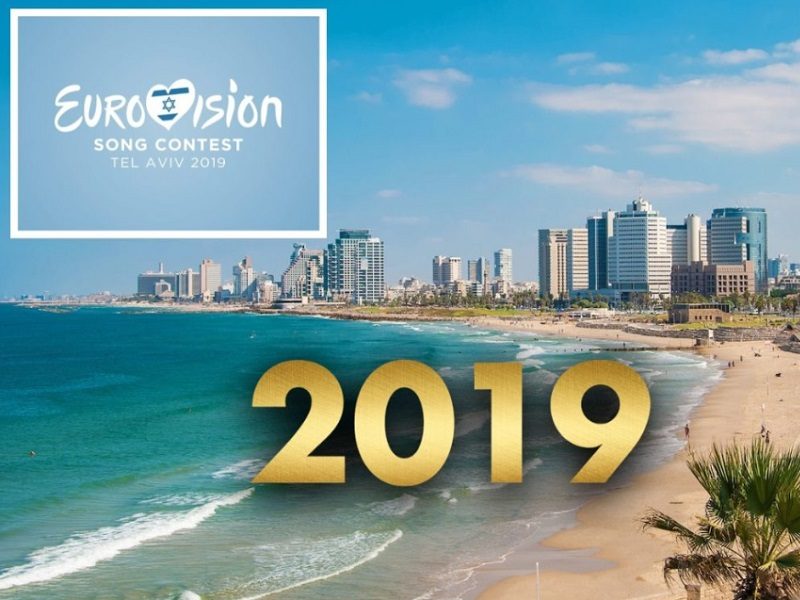





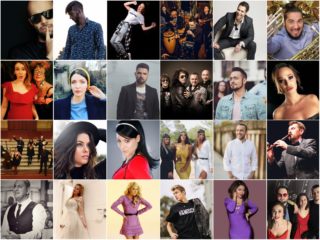

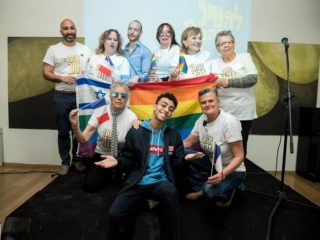
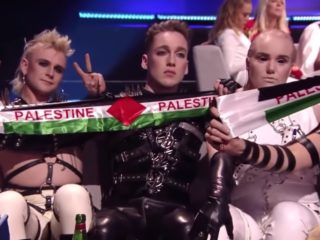
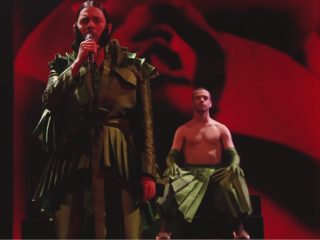
Let’s keep this real for once: The Eurovision site is bulit on an old demolished Palestinaian village – people were driven out 71 years ago in the Nakba.
BS.
Tel Aviv is a new city, founded by “ahuzat bayit” members who left Jaffa. Only jews built it and it is the first Hebrew modern city.
Learn your history!
You learn your history! History doesn’t fit your agenda. Tel Aviv is the first Hebrew city built on desolated sand dunes, north to Jaffa, and it happened many many years before the naqba – Tel Aviv was established in 1909, during the days of the Ottoman rule. Naqba or no Naqba, Israel is a legal state recognized by the UN on November 29th 1947 as part of the partition plan. Those who unfortunately didn’t accept its right to exist next to an Arab state and chose to start a war (hint, it wasn’t Israel) are the ones responsible for the… Read more »
I do apologise (I meant Jaffa):
On Nakba Day, @EUinIsrael throws a party at Charles Clore Park, Tel Aviv
The park is established on most of Manshiyya neighborhood in Yaffa which was ethnically cleansed in 1948
Learn more about Manshiyya https://zochrot.org/en/village/56077 …
Everyone can visit Jaffa and expose the BDS lies. There are many Arabs that live peacefully in Jaffa, side by side with their Jewish neighbors. Don’t believe their stories about “Jaffa ethnically cleansed”.
Israel always called for peace and most Arabs accept it and stays peacefully as full rights citizens in Israel. Some of the Arabs who left Jaffa in 1948, did it on their own decision, following the call from Arab countries, That asked them to leave, in order to let them kill the Jews and occupy Israel.
But who wouldn’t resist when thrown out of their home – and driven away from where they are born! Think about it!
Yes. And Tel Aviv means the Hill of SPRING, Spring symbolizes a new beginning. And so many Jews built it with their own hands, it was a collective effort, from nearly nothing.